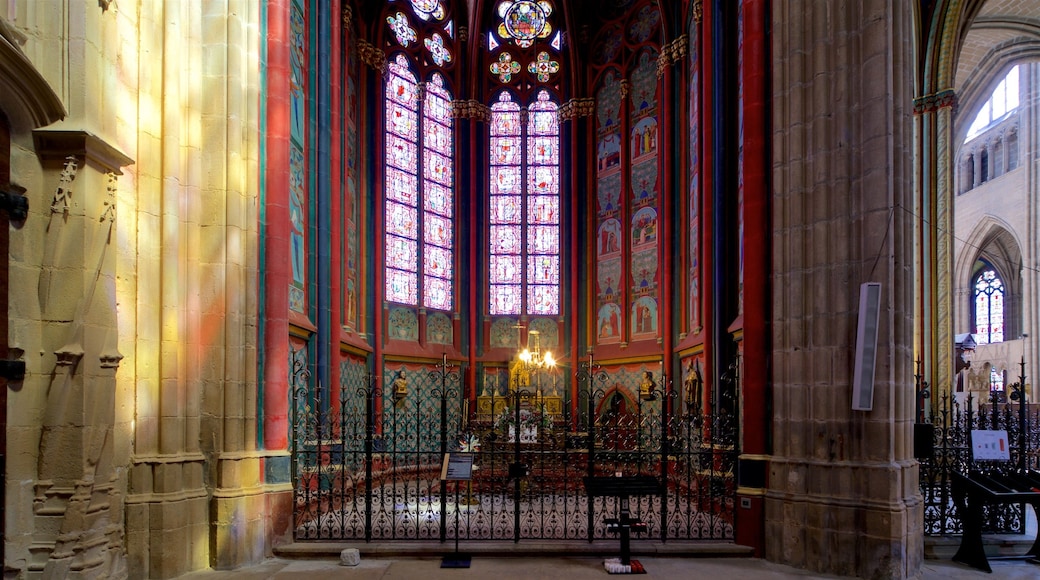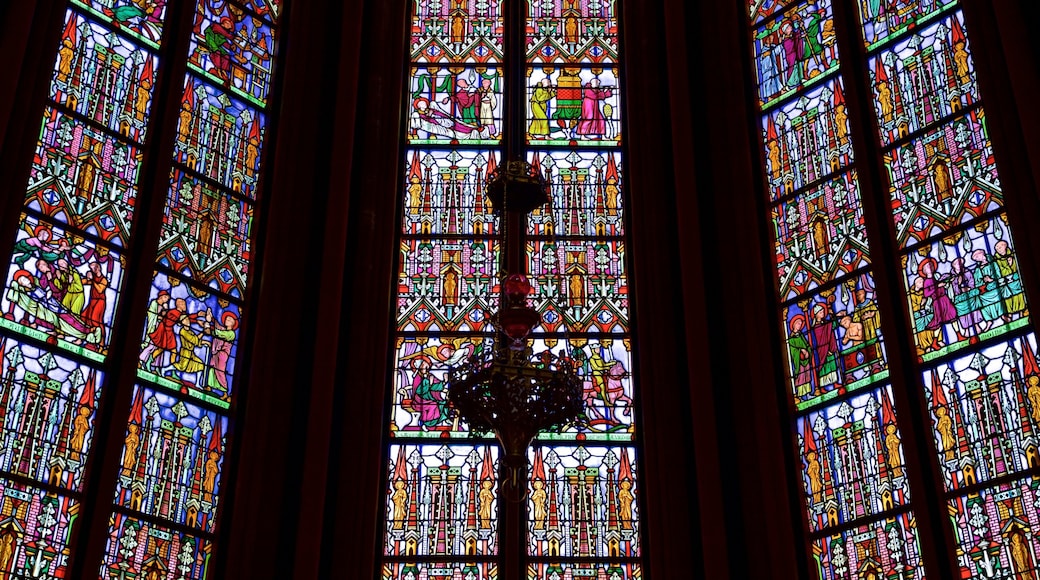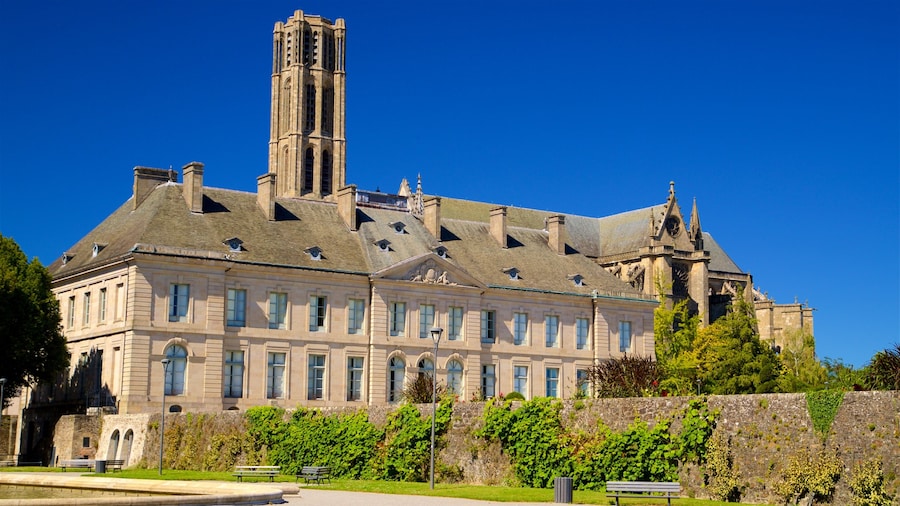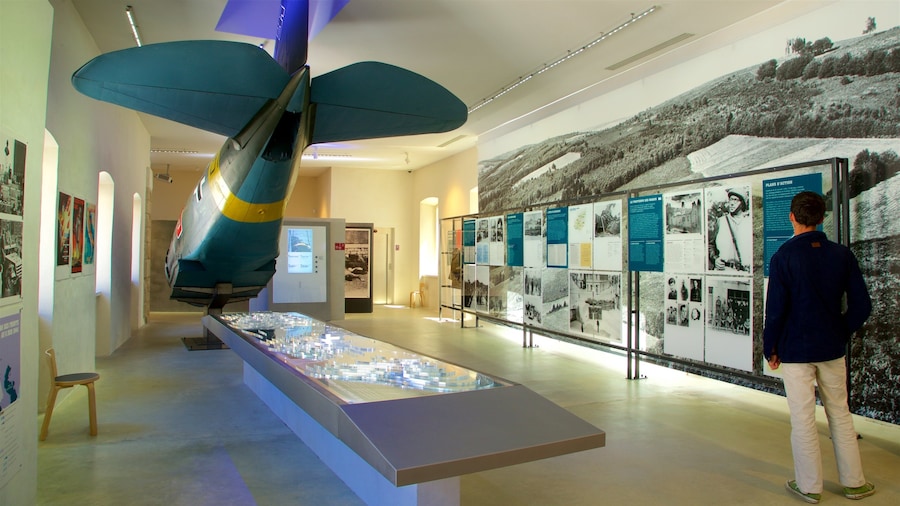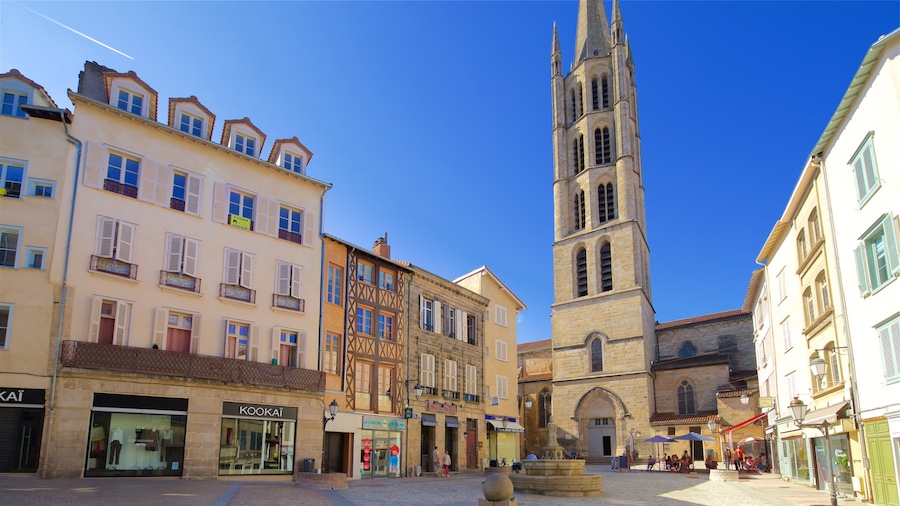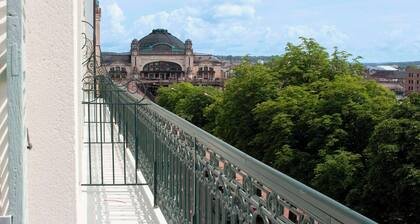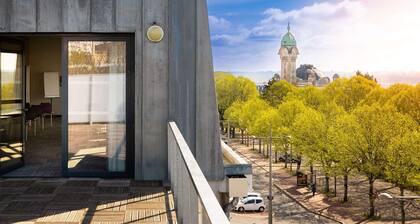Limoges Cathedral, standing proud upon its hill on the banks of the Vienne River, was a labor lasting 600 years for city residents. Construction began in 1273 and ended in the late 19th century, when the nave was finally connected to the church’s bell tower on foundations first created in Roman times. Despite its extended construction history, the church stands as a beautiful example of Gothic architecture, one of few south of the Loire. Approach from the river to see it rise above the trees or wander here through the Old Town.
As in many Limousin churches, enter through the tower, walking slowly to appreciate the massive medieval stonework flanking the entrance. Look up to the elegant ceiling then turn around to appreciate the beautiful Renaissance rood screen dominating the western end of the nave. Crane your head back to appreciate the scale of the arches. Turn right to look at the organ, considered one of the finest in France. Enter one of the side chapels to view a magnificent 5th-century baptistery discovered in 2005 during archaeological digs under the cathedral.
Walk slowly down the nave, viewing the stained glass. Pause in the choir, the oldest part of the church. View the magnificent altar and go around the back to look inside the chapels, some of which still have medieval frescoes of angelic musicians. Examine Dürer-inspired scenes of the Apocalypse sculpted into the tomb of Limousin Bishop, Jean de Langeac.
Wander out slowly or head down to the Romanesque crypt, pondering the many generations of people that contributed to the building of this magnificent house of worship.
Limoges Cathedral stands beside the river, near the Musée des Beaux Arts and the Jardin de l’Évêché. Walk to the cathedral in 12 minutes from the train station or 10 minutes from the center of Old Town. The church is open for visitors daily from Monday to Saturday, but closes during lunch hours on Sunday. Hours are shortened during the winter. Pick up a pamphlet at the cathedral for a self-guided tour of its treasures.

